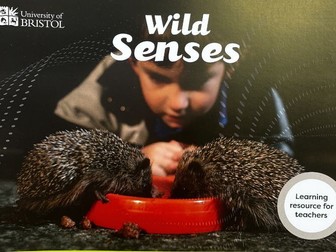
Wild Senses! Key Stage 3 science resource
Animals’ senses are amazing. Using different senses allows animals to interpret and react to their environment in a particular way. Many senses
are highly sensitive and finely tuned; this is due to the adaptation of species in their environment through natural selection. While many animals have the same senses as us, some have senses that we do not have. For example, some animals detect the Earth’s magnetic field or see ultraviolet light. Our own senses enable us to see, hear, smell, taste and touch the environment around them. Some people may have a sensory impairment and use their other senses to a greater degree or in different ways.
Our understanding of senses has changed over time: in the past we have tried to put ourselves in the place of animals, often leading to incorrect assumptions and scientific discoveries about how they sense the world. Today, we have a much better understanding of how other animals interpret their world, although there may still be senses we have not yet discovered!
How to use
This learning resource provides examples of animals that are well adapted to different environments and how their senses have evolved to deal with
the specific conditions they live in. There is also the opportunity to reflect and take action on how some of these animals may need our help to
better survive in habitats that they frequently share with humans. This resource showcases how bats, moles, hedgehogs, deep-sea fish and cave-dwelling animals use their senses. Each subject features a
student-friendly page which can be shown on a screen in the classroom.
Complimenting each one is a relevant page for teachers and learning providers sharing further details, actions to help and areas of interest
to explore.

